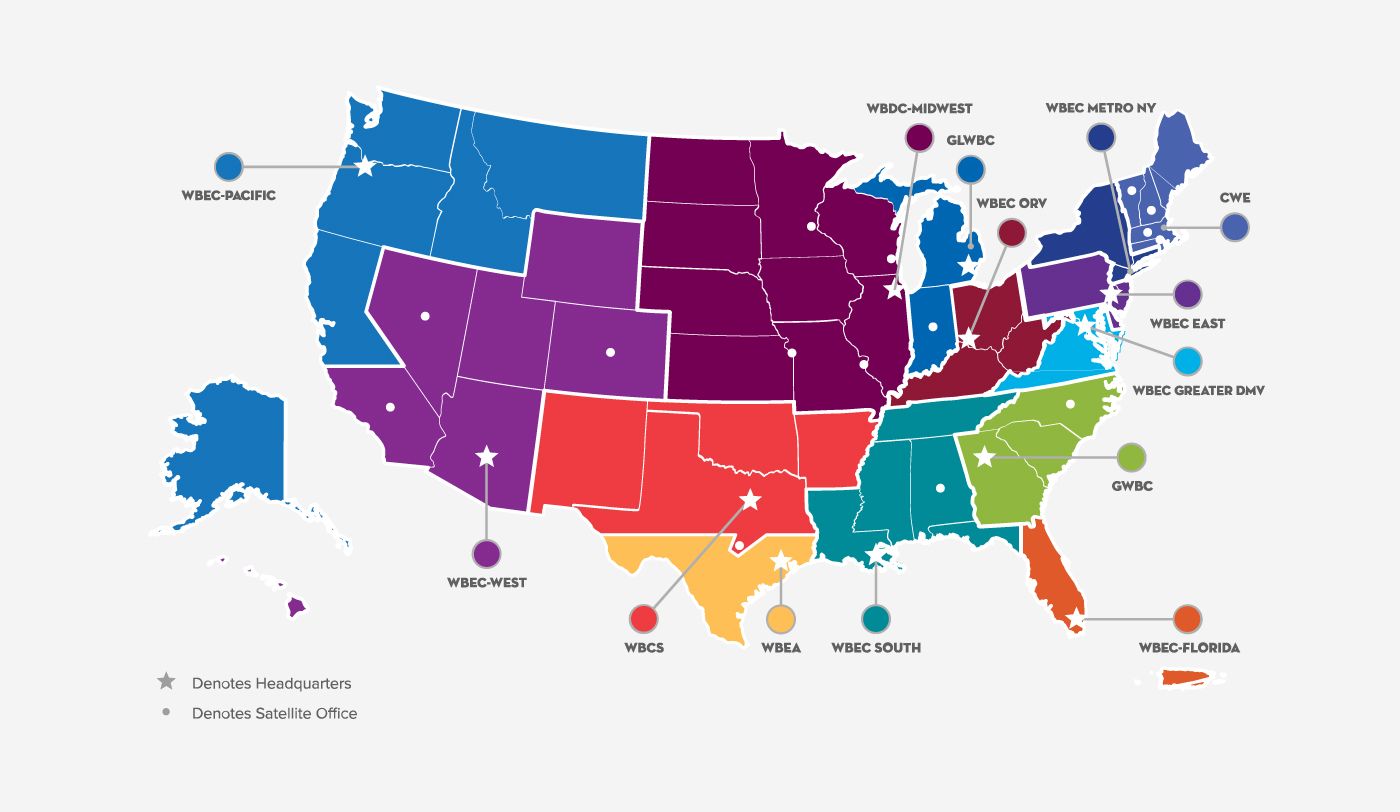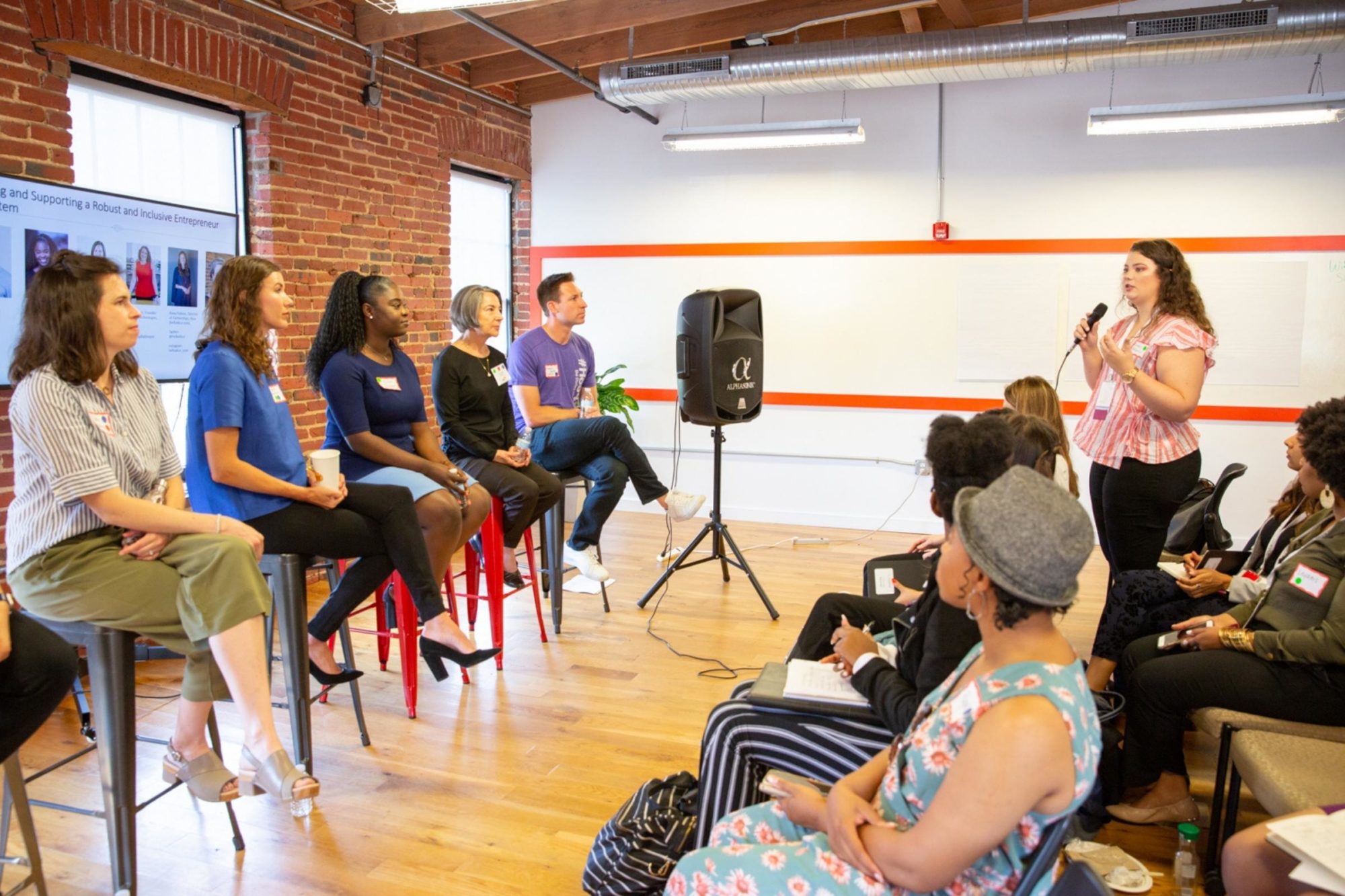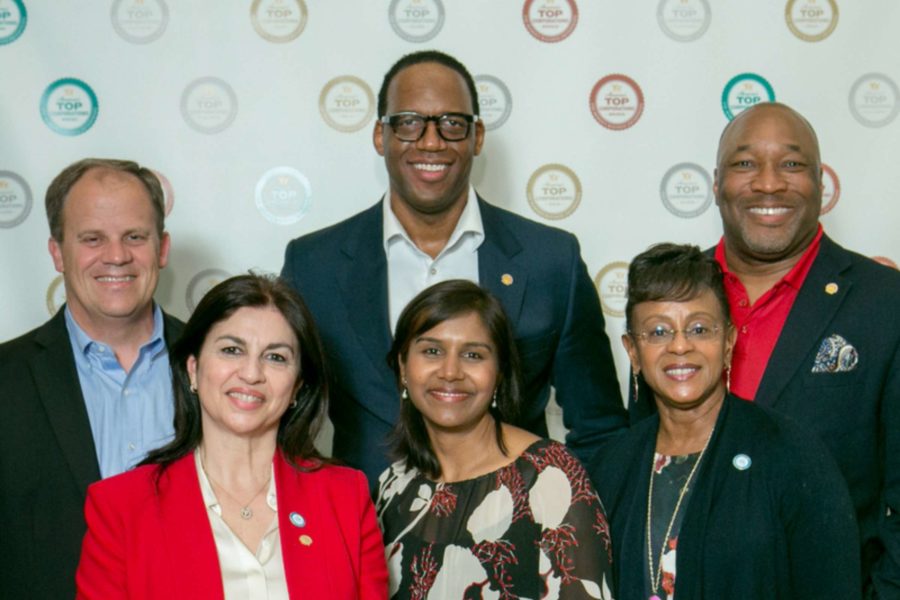Women of Color business owners face unique barriers when trying to make an impact in male-dominated industries, like technology. However, with the right mindset and allies, these obstacles become minor on the way to success.
Dorothy Cafino Finnigan (she/they), CEO of Handcrafted Learning, highlights some of those challenges and identifies ways to navigate—and change—the system.
More than 14 years ago, I founded Handcrafted Learning, a learning and development agency that designs and develops innovative learning solutions for our Fortune 100 partners, including tech giants, financial institutions, and some of the world’s most iconic brands.
As a 4-foot-11 brown woman who grew up in a multilingual motorhome, becoming a leader was not predestined. In fact, I was raised to be a domestic worker like my mother and was used to being dismissed and unseen.
Don’t be ashamed of your past; let it inform what you create.
Avoid internalizing bias.
Women leaders are likely to be viewed more critically than men who have comparable ideas, leadership styles, and performance. A study in the Journal of Management showed that female CEOs were perceived as less capable than male CEOs despite identical qualifications and company finances.
Add to that challenge the results of a workplace study by the University of Pennsylvania Law School, which found that “women of color often face more pervasive and subtle barriers than their white counterparts” and it’s no wonder that as a woman of color leading a business, you find yourself achieving success yet feeling underrecognized.
Growing up with my immigrant mother who’s a member of an indigenous ethnic group, people assumed we were “the help” or didn’t notice us at all. Mom and the other women in my family who are domestic workers raised me to genuinely serve others. What I’ve had to learn—and support my employees in learning—is that it’s possible to serve others without being a servant to others.
What does this mean for you?
- Analyze how your self-perception is influenced by the societal expectations you experienced growing up.
- Identify the habits you developed that helped you navigate those expectations.
- Then—here’s the hard part—develop new self-perceptions and habits that match your current reality. That’s where allies aren’t just helpful; they’re necessary.

Find your allies.
Like many women of color, I didn’t grow up with access to powerful networks or financial capital. Instead, I grew up with a strong work ethic and a sense of self-reliance.
But scaling a thriving business requires you to rely on other people. When you’ve had to depend on yourself for so long, how do you start rewiring your brain to develop a healthy dependence on others?
First, determine who your potential allies are.
You’re probably where you are today partly because you were able to judge the character of others. So, it won’t surprise you to learn that before you can rely on others, you have to find safe people to rely upon.
Your potential allies are the people who see you and respect you. They understand your qualities and capabilities, and—this is important—they want you to succeed.
Next, ask those potential allies for the specific support you need.
I’ll be honest. It still scares me every time I do this.
A few years ago, when I was preparing to facilitate a high-stakes workshop for a client’s C-suite, I had a moment of panic. The part of me that still struggles to accurately see who I am wondered if I would be taken seriously. Luckily, when this uncertainty hit, I was surrounded by clients who had gotten to know me professionally over the past year.
I told them the truth: I was feeling a wave of self-doubt. Without flinching, they each confidently told me: you got this. I believed them because I respected them. And they were right.
Allyship can take many forms: coaching and feedback, standing up to prejudice, or championing you or your company in a forum where you would have been overlooked.
Find your allies. They’re out there. They’re looking for you, too.
Be an ally.
Sometimes you need an ally. Other times, you can be the ally.
 I know it might sound like a tall order, but as a business owner with an allyship lens, you’ll find opportunities to ally with each decision. Notice every person you or your business comes in contact with: employees, suppliers, partners, clients, and end users. Figure out where in that ecosystem members of marginalized groups are excluded.
I know it might sound like a tall order, but as a business owner with an allyship lens, you’ll find opportunities to ally with each decision. Notice every person you or your business comes in contact with: employees, suppliers, partners, clients, and end users. Figure out where in that ecosystem members of marginalized groups are excluded.
For example, we’re in the business of helping large organizations develop their people. One of the things I noticed over the years was just how terrible training was for legally blind learners. My brother is in a wheelchair and has severe cerebral palsy, so I grew up aware of how the design of physical spaces can invite or prevent participation. We collaborated with individuals and organizations in the low- and no-vision community to design digital spaces that could be just as interactive, immersive, and effective for legally blind learners. The result was getting to hear from learners that our trainings were the most included they’d ever felt in a learning experience, and they could tell they’d been designed for from the beginning, not as an afterthought.
By leading a company as a woman of color, you are helping society to evolve. Every day, you broaden the perception of what a CEO looks like.
But your impact doesn’t end at role modeling. Business is a powerful vehicle for change. Why not design yours to uniquely tackle some of the systemic barriers you’ve faced?
The world needs it. The world needs you.






